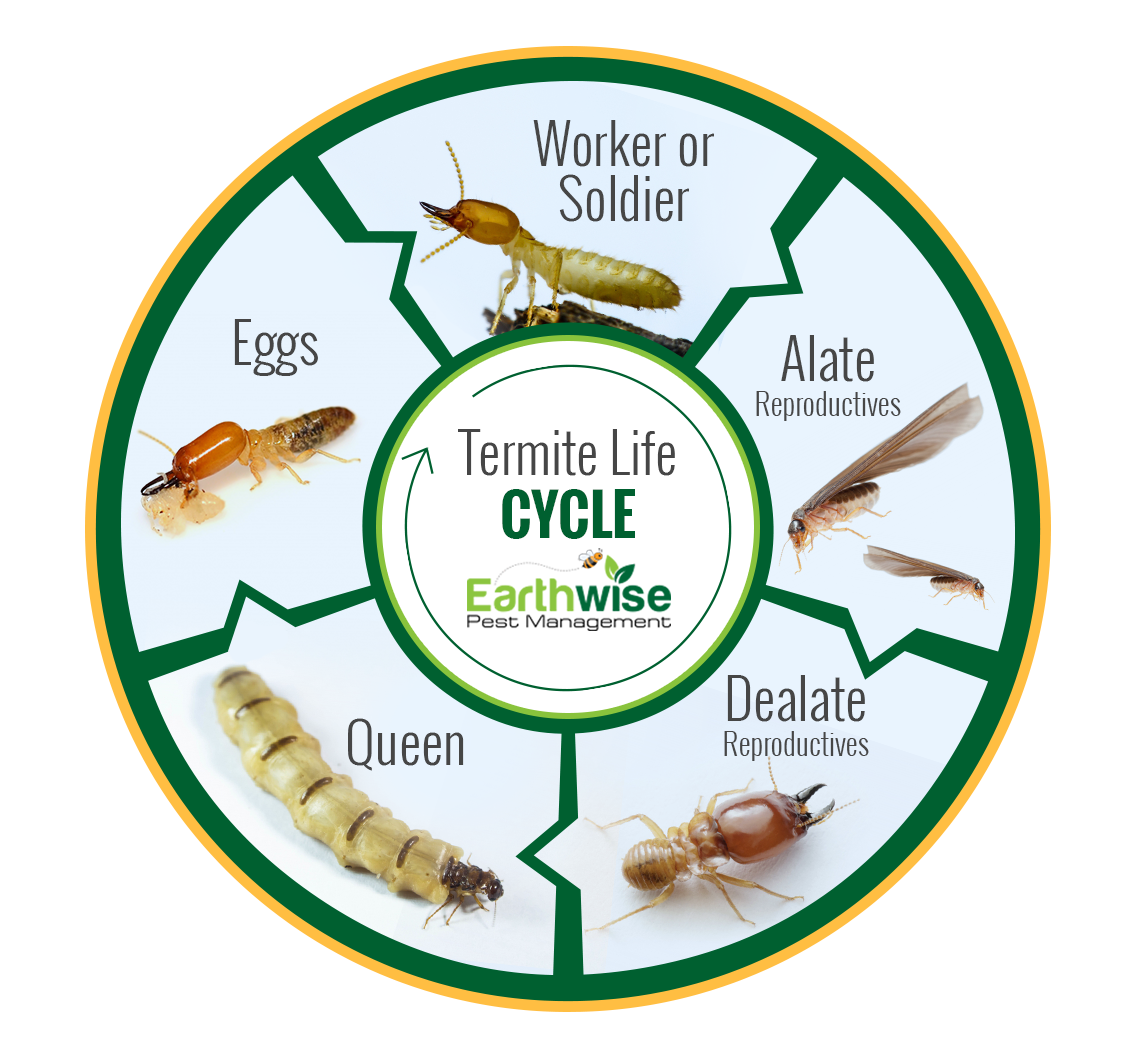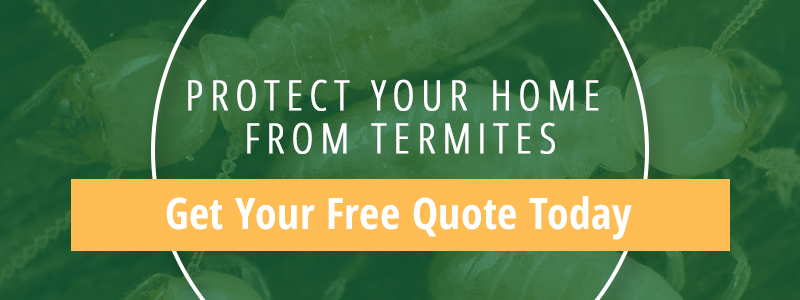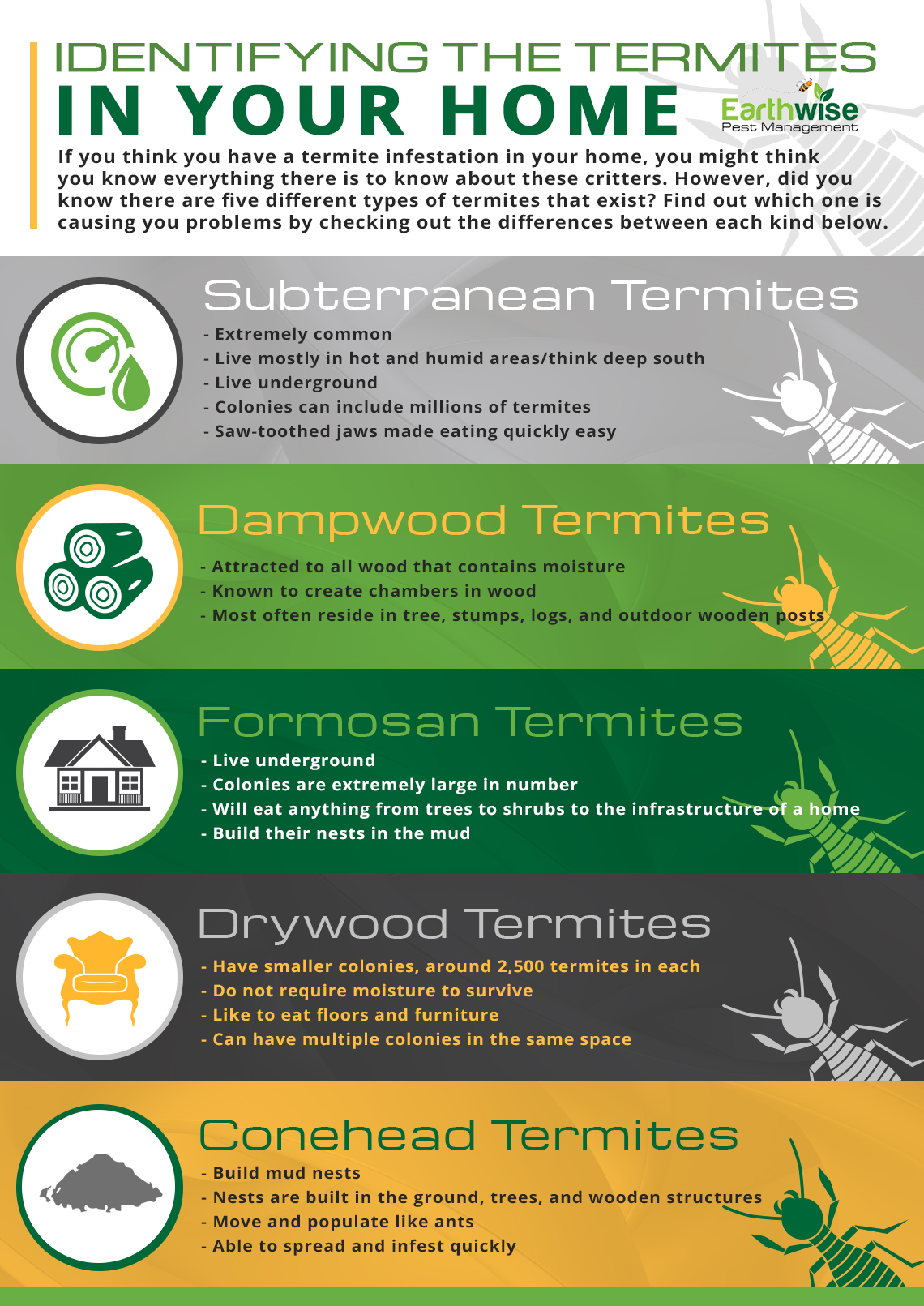As March ushers in the warmer spring weather to Sacramento, not only do we enjoy more time outdoors, but we also face an increase in termite activity. Spring is a crucial time for termite swarms as they mate and pose a heightened risk of termite infestation to homes and other structures. This season, as new termite colonies form, they bring the potential for significant damage to wooden structures in the months ahead.
If you’re noticing changes as the weather warms, it’s crucial to be vigilant about the signs of termite presence. Watch for visible mud tubes on trees in your yard or floorboards in your house. Signs like peeling paint, squeaky floors, or windows and doors that stick could also indicate a termite problem. While termites might seem similar at a glance, there are actually five most common types of termites that could be infesting your property. Understanding these can help you identify and address infestations more effectively. Let’s delve into the specifics of the 5 most common types of termites to better prepare you for what might be lurking.
Subterranean Termites
Known as one of the most destructive termite species, subterranean termites thrive in hot and humid climates like the Deep South. They live underground in extensive colonies that can contain millions of termites. These termites can quickly cause severe damage with their saw-toothed jaws that chew through wood effortlessly. The eastern subterranean termite, a widespread variant, exemplifies the significant risk these pests pose to buildings and homes.
Dampwood Termites
True to their name, dampwood termites are attracted to moist and decaying wood. This preference makes logs, stumps, and old trees ideal environments for their colonies. Dampwood termites are less commonly found inside homes but can be a serious problem in outdoor wooden structures that have moisture issues.
Formosan Termites
Often found in Tennessee and similar regions, Formosan termites are formidable pests due to their aggressive nature and large colony sizes. They are less selective than other termite types and can damage everything from trees and shrubs to the foundational infrastructure of homes. They build intricate mud nests in the soil, and a single colony can swiftly destroy a foot of wood in just under a month.

Drywood Termites
Drywood termites form smaller colonies but are no less destructive. They do not require contact with soil or moisture, allowing them to infest dry wooden items such as furniture and hardwood floors within a home. Because of their ability to live in dry conditions, drywood termites can establish multiple colonies within the same structure, complicating their eradication.
Conehead Termites
Conehead termites are aggressive colonizers and invasive species that build their nests in the mud, trees, and other wooden structures. Unlike other termites, they are highly mobile and can quickly overrun large areas, causing extensive damage rapidly.
Hire A Sacramento Exterminator Today for Termite Control Services!
No matter the type of termite—whether it’s the wood-loving damp wood termites, the invasive subterranean and Formosan termites, or the unique conehead termites—all pose a formidable threat to structures. If you suspect any kind of termite infestation of these or other termite species in your home or business, it’s critical to seek professional help right away. At Earthwise Pest Management, we are experts in identifying and exterminating all termite species, ensuring your property is protected from further termite damage. As a trusted pest control company in Sacramento, we’re ready to help you tackle your termite concerns head-on. Contact us today to schedule an inspection and take the first step toward a termite-free environment!


